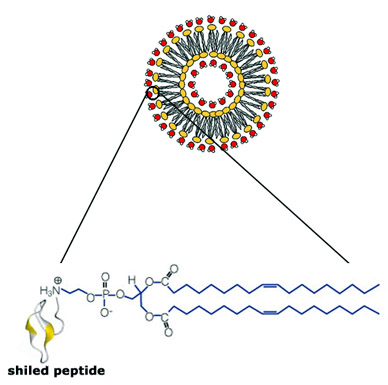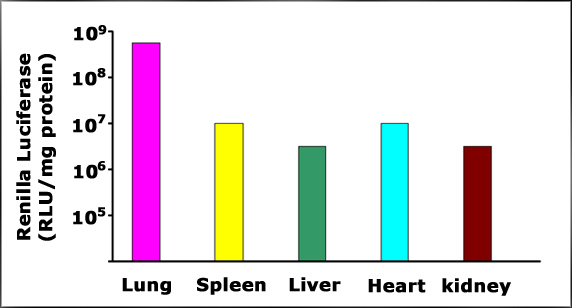EGFIE LLC
We always add value to our customers
Search by Keyword
Product Categories
Although transfection reagents which are usually positively charged vectors expose high gene transfer activity in vitro, systemic administration of such particles is rather restricted. After tail vein injection of different positively charged lipo- and polyplexes into mice, complexes were rapidly cleared from the circulation and mainly accumulated in the lung due to the unspecific binding with extracellular components.

A cartoon showing shielded GenJet™ Plus transfection reagent for in vivo DNA transfection
To eliminate the unspecific interaction between cationic nonviral vector with blood components in circulation, we utilized GenJet™ Plus reagent as backbone and cross-linked a shielding peptide (SP) with amine group of neutral lipid of the backbone. The initial testing results showed that administration of shielded GenJet™ Plus did not induce erythrocyte aggregation. Instead systematic injection of shielded GenJet™ Plus led to enhanced systematic circulation with significant improvement of renilla luciferase expression in lung, spleen and liver compared with control GenJet™ Plus without shield peptide.
Description
GenJet™ Plus DNA In Vivo Tranfection Reagent was formulated from its In Vitro transfection reagent with addition of several proprietary peptides. With new chemistry, the DNA condensing groups were significantly increased in comparison of the original formulation. A shield peptide was also linked to the backbone to prevent In Vivo environment interferences, leading to high In Vivo transfection efficiency. GenJet™ Plus was confirmed to give best renilla luciferase expression in lung, spleen, liver and kidney.
Storage Condition
Store at 4 °C. If stored properly, the product is stable for 12 months or longer.
Comparison of the delivery efficiencies to different organs in mice of a plasmid containing the Renilla luciferase gene mediated by GenJet™ Plus.
Shopping Basket
| Items: | 0 |
| Subtotal: | $0.00 |
Note: All prices in US Dollars
customer@egfie.com
